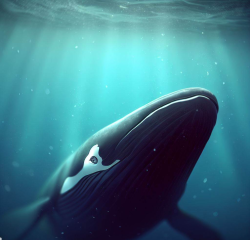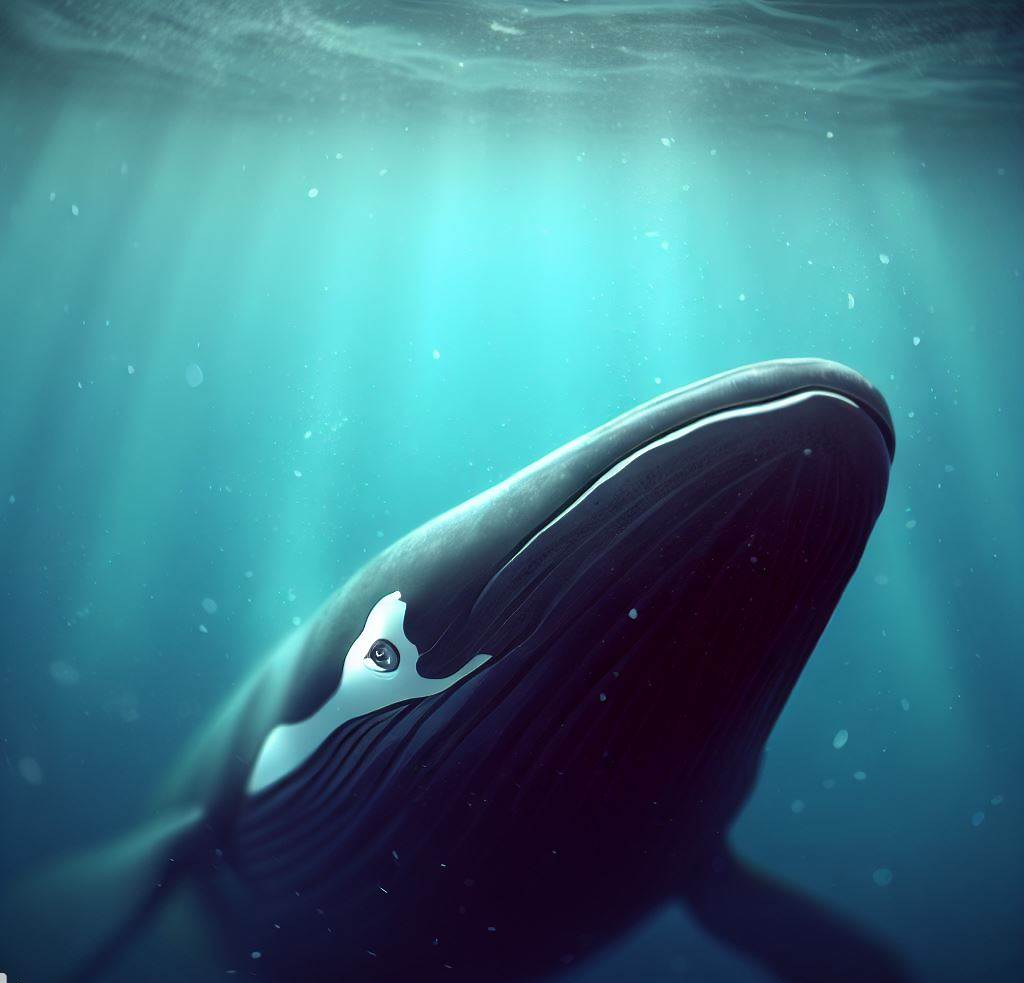Why Do Whales Sleep Vertically?
Answer to the question Do Whales Sleep Vertically? When the whales sleep vertically then at that moment they save energy. By making themselves smaller in the water, they lose less heat and can stay warm. This way, they can rest and recharge their energy while still being somewhat alert. They have big bodies and a special layer of fat called blubber which helps them float. When they sleep vertically by which they can easily float without using much energy to stay up. It is like they are effortlessly floating in the water. Sleeping vertically also helps whales stay safe from predators.
Whales utilize echolocation for navigation and communication, requiring air access even during sleep. They sleep vertically to maintain blowholes above the water’s surface, enabling them to maintain this ability. This sleeping pattern allows whales to maintain proximity to their friends and family, fostering a sense of connection and safety. This adaptation demonstrates whales’ remarkable ability to survive and thrive in the ocean’s depths.
The most interesting thing about the whale that why do whales sleep vertically. This is the question t whom the scientist are researching for the reasons. As many peoples know that whales are aquatic mammals when the whales sleep vertically then at that moment they save energy. By making themselves smaller in the water, they lose less heat and can stay warm. This way, they can rest and recharge their energy while still being somewhat alert. They have big bodies and a special layer of fat called blubber which helps them float. When they sleep vertically by which they can easily float without using much energy to stay up.
Whales sleep vertically to stay safe from predators and communicate through echolocation, a unique way of finding their way around and communicating. This allows them to keep their blowholes above the water’s surface, allowing them to access air for echolocation. Sleeping vertically also allows whales to be close to their friends and family, fostering a sense of connection and safety. This adaptation to underwater life demonstrates the remarkable ability of whales to survive and thrive in the ocean’s depths.
Introduction:
In this context, we will get into the reasons why do whales sleep vertically. Whales are the majestic species of the deep seas and oceans and have always fascinated humans with their immense size, gentle nature, and captivating behaviors. Among these behaviors is the intriguing phenomenon of vertical sleep they are shedding light on this enigmatic aspect of their lives.
How Long Whales Sleep?
Whales cannot survive without oxygen so they come to the surface to take breath. Whales have sleep patterns that set them apart from humans and most land animals, despite being mammals. Research indicates that they have short sleep episodes scattered throughout the day and night, rather than long continuous periods of sleep like humans. The time duration of these episodes depends upon whale species ranging from a few minutes to several hours. Interestingly certain whales such as the sperm whale can experience deep sleep making up around 7-8% of their daily time. Factors like size, environment, and social behaviors influence the sleep patterns of whales, resulting in unique and fascinating sleep habits for each species. You can also know more about Why do whales sleep vertically?
Some Reasons Of Whales Sleeping Vertically:
The reasons why do whales sleep vertically are as follows:
Conservation Of Energy:
One of the primary reasons why do whales sleep in vertical sleeping positions is to conserve energy. As warm-blooded mammals, whales must maintain their body temperature in the often chilly waters they inhabit. By resting vertically, they reduce the exposed surface area to minimize heat loss. This energy-saving mechanism allows them to replenish their energy reserves while still maintaining a level of alertness.
Buoyancy Support:
Whales are buoyant creatures due to their large bodies and the presence of blubber which is a thick layer of fat. When they sleep vertically their buoyant bodies naturally rise toward the water’s surface. This position enables them to maintain an effortless float while asleep by conserving energy that would otherwise be expended on staying afloat in a horizontal position.
Predator Avoidance:
Sleeping in a vertical position provides whales with a tactical advantage against potential predators. As they rest then they can remain partially submerged with only their blowholes exposed to the air. This allows them to maintain a state of semi-consciousness for enabling quick reaction times and the ability to swiftly escape from lurking threats.
Echolocation Continuity:
Whales can heavily rely on echolocation in a biological sonar system to navigate and communicate underwater. By sleeping vertically, they can keep their blowholes above the water’s surface by ensuring a constant supply of oxygen for respiration. This allows them to maintain a steady flow of air to ensure uninterrupted echolocation capabilities even during sleep.
Social Bonding:
These whales are known to be highly social creatures and sleeping vertically offers an opportunity for social interaction and bonding. By sleeping in close proximity to one another they can maintain physical contact and communicate with gentle body movements. Vertical sleep serves as a mechanism for strengthening social connections within the pod and promoting a sense of security and companionship.
Do Whales Sleep Vertical?
Whales are known for their “logging” behavior but rest vertically in the water column. They are voluntary breathers, requiring conscious surface breathing even while asleep. To overcome this, they rest one hemisphere of their brain at a time allowing the other to stay awake and control essential functions.
During logging, a whale will float near the water’s surface, often remaining still for periods of time. This behavior has been observed in species like sperm whales and humpback whales. They achieve this vertical position by keeping their blowholes above water which enables them to breathe without having to move much. It is a fascinating adaptation that helps them balance the need for rest with the requirement to breathe. However, not all whale sleep vertically, and sleeping behaviors can vary based on the species and their specific environmental factors.
Do All Whales Can Sleep Vertically:
The vertical sleeping behavior observed in whales serves multiple purposes including energy conservation, buoyancy support, predator avoidance, echolocation continuity, and social bonding. Through this unique sleeping position, they have adapted to optimize their survival in the marine environment. By understanding and appreciating these fascinating adaptations we can gain deeper insight into the lives of these incredible creatures. If you want to know more about sea creature as Do starfish have heart you can visit my post.
Whales Can Control Breath Underwater:
Whales have incredible adaptations that allow them to control their breath underwater.
Whales are mammals so they need to breathe air to survive. Furthermore, being an ocean dweller they have developed remarkable mechanisms to control their breath while underwater. One key adaptation is their blowhole, which is located on the top of their heads. When a whale surfaces, the blowhole opens for allowing the whale to exhale and inhale fresh air. This quick exchange replenishes their oxygen supply.
To dive underwater the whales can voluntarily close their blowholes using muscular contractions, preventing water from entering. This closure is crucial in maintaining their air supply and preventing water from entering their respiratory system. Additionally, they have a high concentration of myoglobin which is a protein that stores oxygen in their muscles. This enables them to store oxygen for longer periods and endure extended dives.
Whales have a slower metabolic rate while diving by reducing oxygen consumption and allowing them to conserve their air supply. They can slow down their heart rate and redirect blood flow to vital organs, further optimizing oxygen usage. These adaptations collectively enable whales to control their breath underwater in facilitating their remarkable ability to dive deep and explore the ocean depths while maintaining their oxygen needs.
Whales Protection While Sleeping:
Whales have developed various strategies to protect themselves while sleeping in the ocean. While whales sleep, they must remain vigilant against potential threats. Despite being in a state of rest, they have mechanisms in place to ensure their safety.
One common protective measure is sleeping in groups. Whales often sleep in close proximity to one another, forming a protective circle or pod. This collective presence provides safety in numbers, as they can detect and deter predators more effectively together. To maintain awareness of their surroundings they practice unihemispheric sleep. This means that only one hemisphere of the brain sleeps at a time by allowing the other half to remain awake and vigilant. By alternating sleep between brain hemispheres, whales can rest while still staying alert to potential dangers. Additionally, whales adopt a vertical sleeping position.
By sleeping vertically, they can keep their blowholes exposed above the water’s surface, ensuring a constant supply of oxygen for breathing. This position also allows them to quickly react and escape from predators if needed. Overall, through group sleeping, unihemispheric sleep, and the vertical sleeping position, whales have evolved strategies to protect themselves while still getting the rest they need. These adaptations enable them to balance sleep and safety in the vast and sometimes perilous marine environment.
Facts & Features Of Whales:
- Whales are captivating oceanic creatures, known for their remarkable attributes.
- They claim the title of the largest animal on Earth like whales with their majestic blue whale reigning as the largest known species.
- Being mammals, whales give birth to live young and nourish them with milk.
- They have evolved various adaptations for life in the water, including streamlined bodies for swift movement, insulating blubber to withstand cold temperatures, and powerful tail flukes for efficient propulsion.
- Impressively, whales can hold their breath for extended periods, some reaching up to 90 minutes, owing to specialized physiological adaptations.
- These gentle giants are also recognized for their intricate vocalizations, employing a repertoire of clicks, songs, and calls to communicate and navigate their vast aquatic environment.
- In marine ecosystems, whales play a vital role as apex predators, upholding a balanced food chain and contributing to the overall health of the oceans.
FAQs:
1 Do whales sleep vertically?
Yes, whales do sleep vertically, as it allows them to conserve energy, maintain buoyancy, and be in a state of semi-consciousness for predator avoidance.
2 How do whales sleep vertically without sinking?
Whales sleep vertically without sinking due to their buoyant bodies and adaptations such as closing their blowholes and maintaining partial awareness to quickly react if needed, allowing them to rest while staying afloat in the water.
3 Do whales sleep vertical or horizontal?
Whales primarily sleep vertically, as it helps conserve energy, maintain buoyancy, and stay alert. However, they can also sleep horizontally on rare occasions, typically during shallow naps near the water’s surface.
4 How long can a whale sleep?
The exact duration of whale sleep is challenging to determine, but they have short sleep episodes throughout the day and night, with some species capable of sleeping for a few minutes to several hours in these intermittent bursts.
5 Can whales swim while sleeping?
Whales cannot swim while they are in deep sleep, as their muscles are relaxed. However, they can still maintain buoyancy and stay afloat in a passive manner during their sleep.
6 Do whales sleep vertically?
Yes, some whales sleep vertically in a behavior called “logging.” They float near the surface, with blowholes above water, allowing them to rest one brain hemisphere at a time while staying conscious to breathe. This adaptation helps them balance sleep and survival.
7 Why do sperm whales sleep vertically?
Sperm whales sleep vertically to maintain their need for air while resting. Being voluntary breathers, they keep one hemisphere of their brain awake to control breathing and other vital functions. This unique adaptation allows them to balance sleep and survival in their marine environment.




